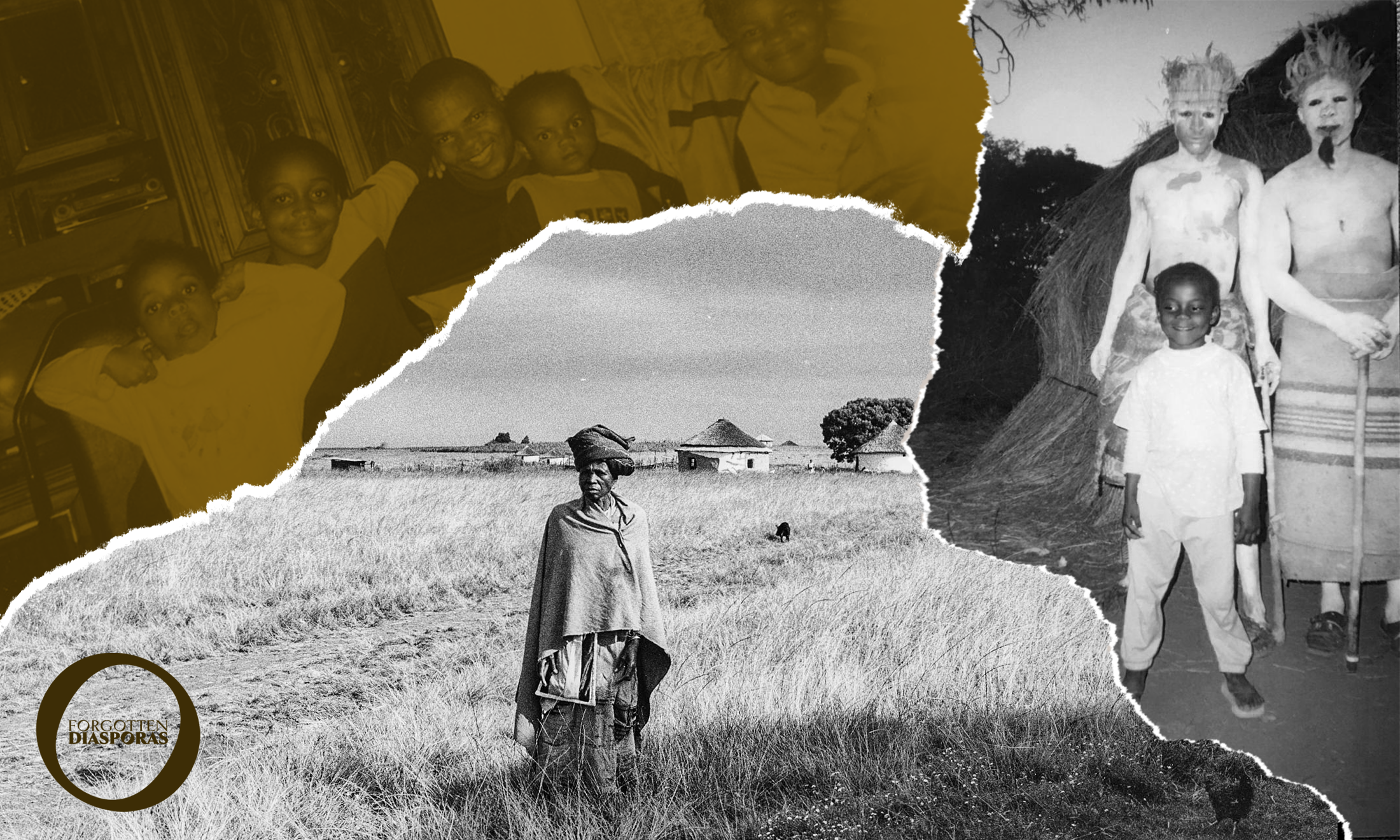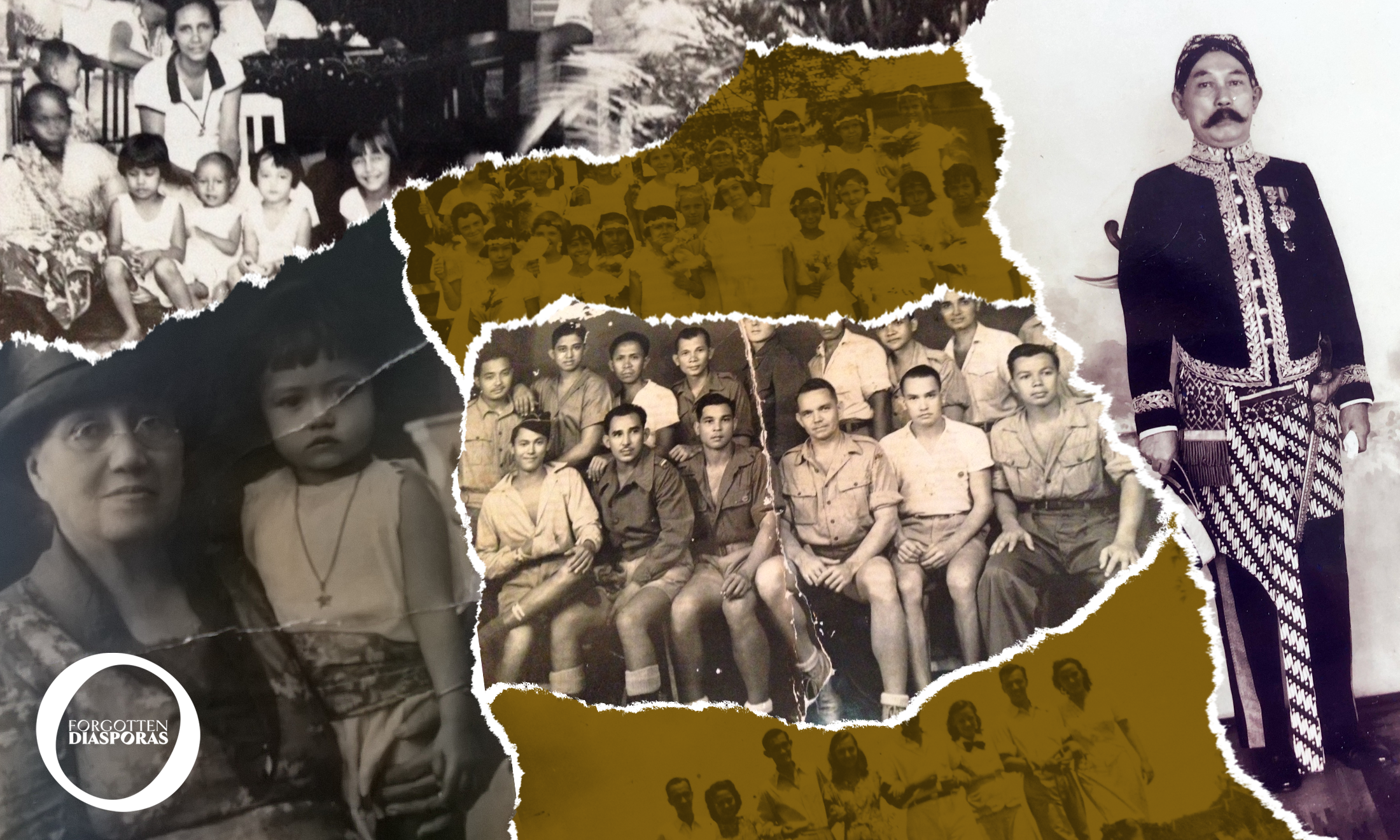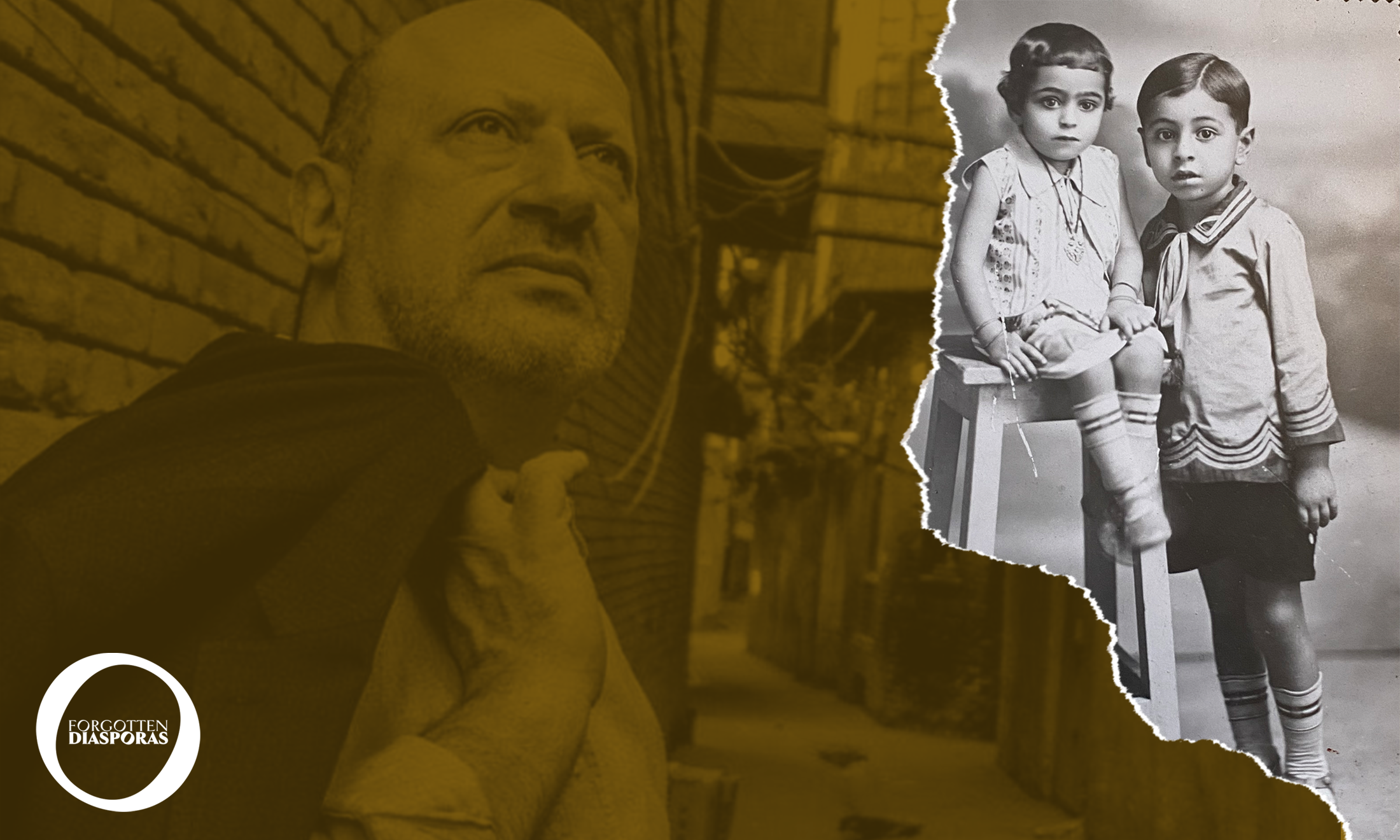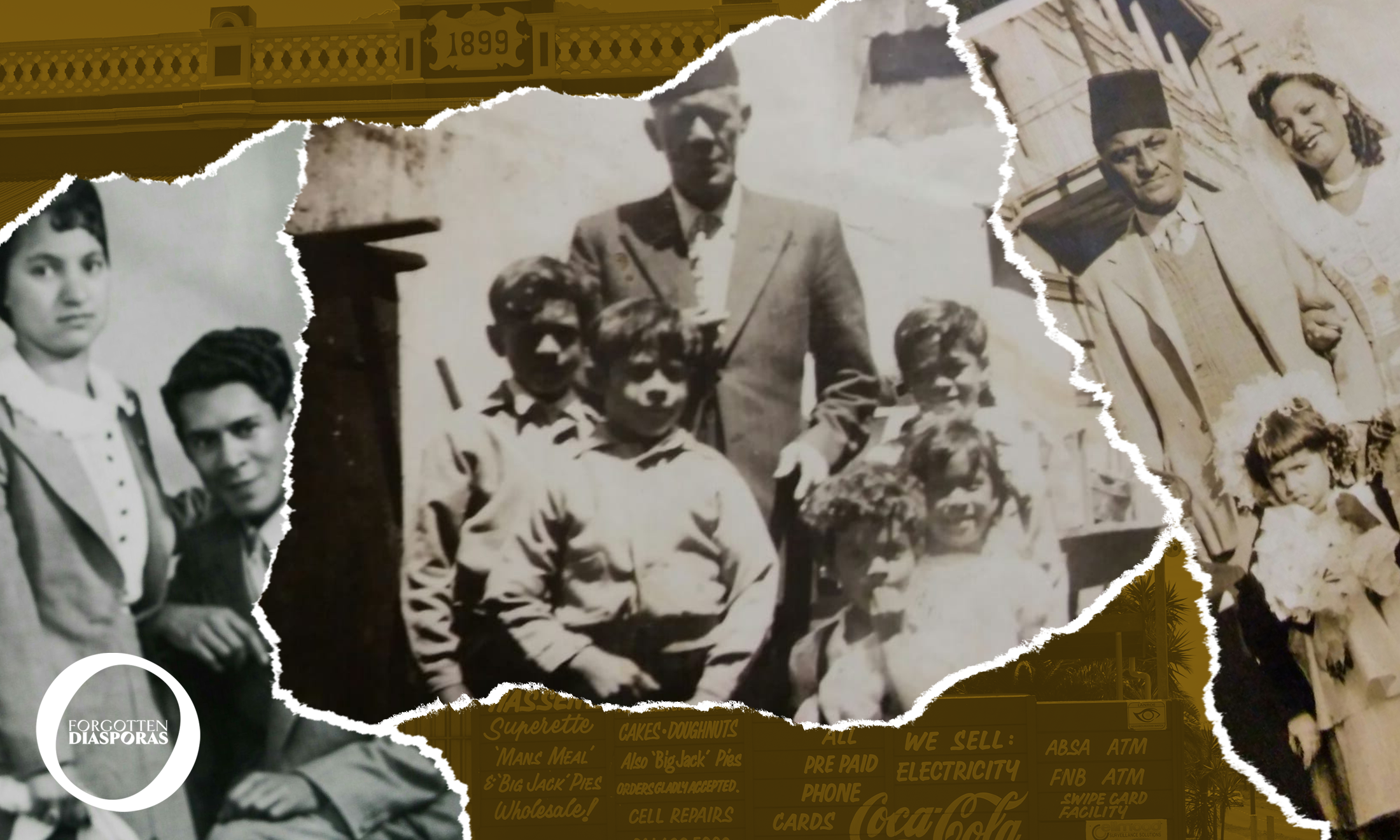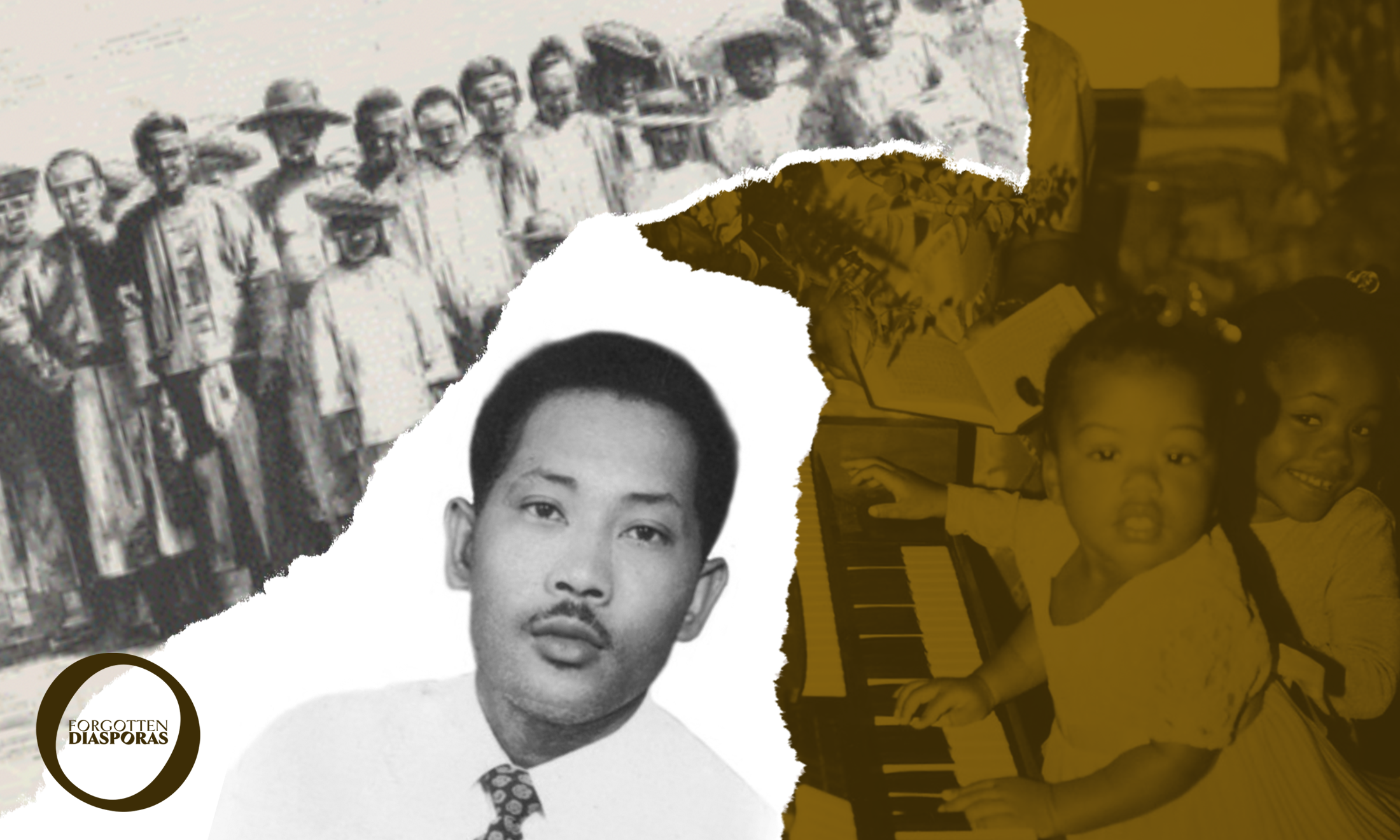
via author
Tracing roots of the Chinese Jamaican diaspora
With over 50,000 Chinese-Jamaicans residing on the Caribbean island, how did such a unique community form?
Nandina Hislop and Editors
04 Sep 2021
When my maternal great-grandfather Baker Chung-Yu migrated from Hong Kong to Jamaica over a hundred years ago, he probably didn’t expect that a few generations later, there would be over 50,000 Chinese-Jamaicans residing in the land of wood and water. He arrived as a businessman in the 1920s, after Hong Kong was snatched by the British Empire in 1842, seeking financial comfort for his future. This move allowed him to meet my Afro and Indo-Jamaican great-grandmother May Ranger and unknowingly spark the beginning of a growing Chinese-Jamaican family that would live to continuously explain our unusual heritage.
Growing up, I didn’t fully grasp the meaning of what it meant to be a Chinese immigrant in Jamaica. I am fourth generation Chinese, mixed in heritage and Black in racial identity. Born in Jamaica, raised in the Turks and Caicos Islands, and now living in the UK, my hop-scotching residential reality had meant I was isolated from most of my extended family, a significant portion being those of Chinese descent. Now that I’m older, I crave details about my Chinese ancestry and am now exploring a cavernous story rooted in struggle and resilience that I never knew existed.
But how did a whole Chinese diaspora end up in Jamaica? According to historian Patrick Bryan, Chinese and Indian people began to migrate to Jamaica and other Caribbean countries like Trinidad back in 1854 after slavery was abolished, to replace the unpaid labour of Afro-Jamaican slaves. Called indentured workers, they were contracted in a labour system to work on the sugar plantations in exchange for boarding, health provisions and food – a promise often violated.
“Chinese and Indian people began to migrate to Jamaica and other Caribbean countries like Trinidad back in 1854 after slavery was abolished”
This first wave of movement spanned from 1854 to 1886, with ships mostly carrying Hakka men who primarily lived in areas like Guangdong province, in southern China. Hence, the majority of Chinese people in Jamaica are descendants of the Hakka. This was just the first of three major waves of migration. Bryan writes that from 1900 to 1940, the second influx of Chinese people migrated to Jamaica (most being businessmen) and that this rush resulted in the highest number of Chinese people arriving in Jamaica in one sitting. The third wave of the 1980s brought men, women and children, but was smaller in numbers than the second. And thus after years of mixing and mingling, the inevitable interracial population of of Chinese Jamaicans was created. By 1970, 11,701 people of Chinese descent lived in Jamaica.
Though Chinese-Jamaicans are very much integrated into larger Jamaican society now, it hasn’t always been an easy journey. There have been three significant anti-Chinese riots on the island, with the most recent being in the late 1960s. These riots were a culmination of rumoured ‘violent incidents’ inflicted on the Black population by members of the Chinese community and discrepancies over opium use. The 1965 riot lasted a week and not long after that, Chinese people began to flee from Jamaica to cities like Toronto, Miami and New York. Years ago, my grandfather told me that he once fled an area on the back of a pickup truck to avoid being assaulted due to the racial tensions. He eventually ended up moving to the US and has now sadly passed away. The emigration was not in whole due to the riot, but also for greater opportunities presented in more prosperous countries.
But why did Chinese people move away from China in the first place?
In the 19th century, Chinese people first migrated to Jamaica without much choice, fleeing opium wars, political unrest and widespread hunger caused by floods wiping out food supply. The hub for most of this adversity was in southern China, affecting the Hakka heavily. According to some historians, the Hakka were a hard-working group seen as ‘inferior‘ in China, and came to Jamaica to put their manual labour into practice for a better life.
“It was never a ‘choice’ for indentured labourers to migrate, and actually, many were abducted or hoodwinked into signing labour contracts if they did”
However, cultural historian and Cornell University professor Dr Tao-Leigh Goffe, who is also of Chinese-Jamaican descent, explains that history tells a watered-down version of the true events in terms of ‘push-pull’ factors. “More interesting to me is the heterogeneity and specificity of port cities and individual actors. After understanding that Kingston, Jamaica was a vibrant harbour, one begins to consider the circuitry of the British Empire and the ways in which Hong Kong was another vibrant port city. Far from viable, it was a tortuous journey across oceans, marked by death,” she says. Dr Goffe explains it was never a ‘choice’ for indentured labourers to migrate, and actually, many were abducted or hoodwinked into signing labour contracts if they did.
Patrick Bryan’s research confirms this: 20% of Chinese indentured labourers arriving on the first ship, called Epsom, in 1854 had to be hospitalised. Over the next 34 years, more ships like the Vampire, Theresa Jane, S.S. Prinz Alexander collectively brought over 1,000 Chinese people from Panama who had been working on the Panama Canal Railway, fed up with the site’s squalid working conditions. Yet the environment for Chinese indentured labourers in Jamaica wasn’t that much better, as a lack of financial support and poor health conditions led to uprisings against the British Empire in Jamaica. In the end, indentured Chinese people in Panama, Jamaica and Cuba endured lives composed of illness, death and rebellions often brushed under the rug.
Chinese people’s influence on Jamaican culture
For the business-oriented Chinese people who travelled to Jamaica by choice, most set up small grocery shops, bakeries and restaurants. My great-grandfather was one of them, arriving during the period of the second wave and setting up a small grocery shop before branching out into baking and even selling home-grown popcorn. While this did not become the family business, my uncles still own corner shops operating in Jamaica today.
The increasing number of Chinese-owned corner shops became known as ‘Chiney’ shops in Jamaica, similar to South Asian-owned corner shops in the UK. So by 1925, even though the Chinese population took up 1% of the nation’s count, 28% of them held trade licenses, giving them a strong place in Jamaica’s retail and wholesale industry to this day.
Dalton Yap, member on the Supervisory Board of Jamaica’s Chinese Benevolent Association (CBA), recounts doing his fair share of retail work as a teenager for his parents in Jamaica. “After school while my friends were running around, I would drop my bag and get around the shop counter,” he says, “I have my BSc (Behind Service Counter)”.
“The increasing number of Chinese-owned corner shops became known as ‘Chiney’ shops in Jamaica, similar to South Asian-owned corner shops in the UK”
Chinese people may not have had a colossal impact on Jamaica’s economy, but they have certainly left their mark on the country’s culture in different ways. Across Jamdown, chances are you will stumble on a Chinese shop where the shopkeepers are respectfully known as ‘Mr. Chin’. Or what the Black community now calls Bantu knots, is called ‘Chiney Bumps’ in Jamaica, possibly due to the similarity to the traditional Chinese side bun hairstyle.
But because merged Chinese and African heritage is the only reality for some, as Goffe puts it, “it hasn’t had an impact on the culture per se, it is the culture”. With food, Chinese restaurants and bakeries are found all over Jamaica. It is an unspoken rule that savoury Jamaican dishes must consist of the sweet-smelling green vegetable scallion similar to spring onion, which originated in Central Asia. Otherwise you’ll find popular Chinese dishes in Jamaica like fried rice, pork and yam, spicy soup or pak choi.
While Jamaica is a small country relative to the rest of the world, it has played an extremely influential role in music internationally, and Chinese-Jamaicans have had a big hand in its success. In the late 1970s, Patricia Chin, a first-gen Chinese-Jamaican, and her husband Vincent co-founded VP Records, making Jamaican music known to the masses, and propelling the careers of then-burgeoning artists like Bob Marley across North America and worldwide. Mr ‘Right Temperature’ himself Sean Paul is of Chinese descent, as is dancehall artist Shenseea and The Voice USA season 5 winner Tessanne Chin.
So how do Chinese-Jamaicans keep connected to their Chinese ancestry?
The Chinese-Jamaican community today has the Chinese Benevolent Association to thank for reviving the pulse of Chinese practices in Jamaica. Previously known as the Chinese Benevolent Society, it was set up to assist Chinese immigrants assimilate into Jamaican society financially and culturally, while breeding a community of common identity. Though lacking funding, this centre still runs events to celebrate the Chinese New Year and Qingming, also known as Gah-San, the Tomb-Sweeping festival marking the beginning of spring.
Through bodies like the Chinese Benevolent Association, descendants can keep in touch with our roots by accessing the Chinese-Jamaican cemetery database to track down our ancestors and even learn Mandarin. But outside of formal structures, the place Chinese culture truly lives in is in the home.
While I didn’t grow up around Chinese culture, I’ve still wondered what it would be like to fully immerse myself into the lesser-explored side of my identity. Unfortunately, as a child, the peak of my Chinese experience was when screaming the lyrics of Sagwa the Chinese Siamese Cat’s theme song and practicing Mandarin on television with Ni Hao Kai Lan. In conversation with other youth members of the diaspora from Jamaica they share a similar experience. Many descendants do not speak Mandarin and barely take part in traditional festivals.
“Many descendants do not speak Mandarin and barely take part in traditional festivals”
But while some of us in the younger generation of the diaspora struggle to connect and identify with isolated Chinese culture, there are some who remain balanced in a merge of the two. I spoke with Grammy-nominated DJ Sparkie, who is half Chinese-Jamaican and half Afro-Jamaican. She grew up speaking both Hakka and Jamaican patois fluently, was close to her grandparents of Chinese heritage and attended the seasonal Chinese festivals in Jamaica as a child.
She recalls how her Jamaican-born grandmother had been sent to China by her parents for school and married a Chinese man, both eventually moving back to Jamaica. Sparkie was brought up closely with her grandparents and this connection helped forge a strong relationship with her Chinese heritage. When thinking about her relationship with Chinese culture growing up, she first draws on food and her grandparents. She recalls a story her grandmother has shared with her about militant unrest in China, and how the Japanese once raided her grandmother’s wedding and “nyam off dem wedding cake,” but still managed to share compliments on the wedding dress. Sparkie also notes small things that she feels helped to bring her closer to her Chinese family. Things like gardening, eating with chopsticks and Chinese classical music that she hated as a child but now enjoys today, with a sprinkle of Chinese pop.
“As Chinese-Jamaicans, we sing the Patois language, we devour the ackee and saltfish and the roti”
Jamaica is home to a well-seasoned melting pot of cultures, with a motto so fitting: ”out of many, one people”. Naturally, when you move to a new country you tend to assimilate into society, borrowing and lending pieces of culture. From my perspective, the traditional Chinese practices within the diaspora in Jamaica have blended into the potency of Jamaica’s variegated culture, which I proudly indulge in.
As Chinese-Jamaicans, we sing the Patois language, we devour the ackee and saltfish and the roti. The reggae music engulfs us and the cultural experience is difficult to forget even for tourists.
While lesser-known, the Chinese diaspora in Jamaica is still alive, with a rich history eager to be told. Though the kindred struggle of Chinese across the Caribbean and Afro-Jamaicans is harlequin, reparations are withheld by oppressors. What strikes me most about this history is the collective Caribbean proclivity for resilience.
To be Hakka and Caribbean, is to be invincible.
*This article was amended on 8 September to state that spicy soup is a popular Chinese dish found in Jamaica. An earlier version mistakenly referred to spicy pho. This article was also amended on the same date to state that DJ Sparkie grew up speaking both Hakka and Jamaican patois. An earlier version mistakenly stated that she grew up speaking both Mandarin and Jamaican patois.

